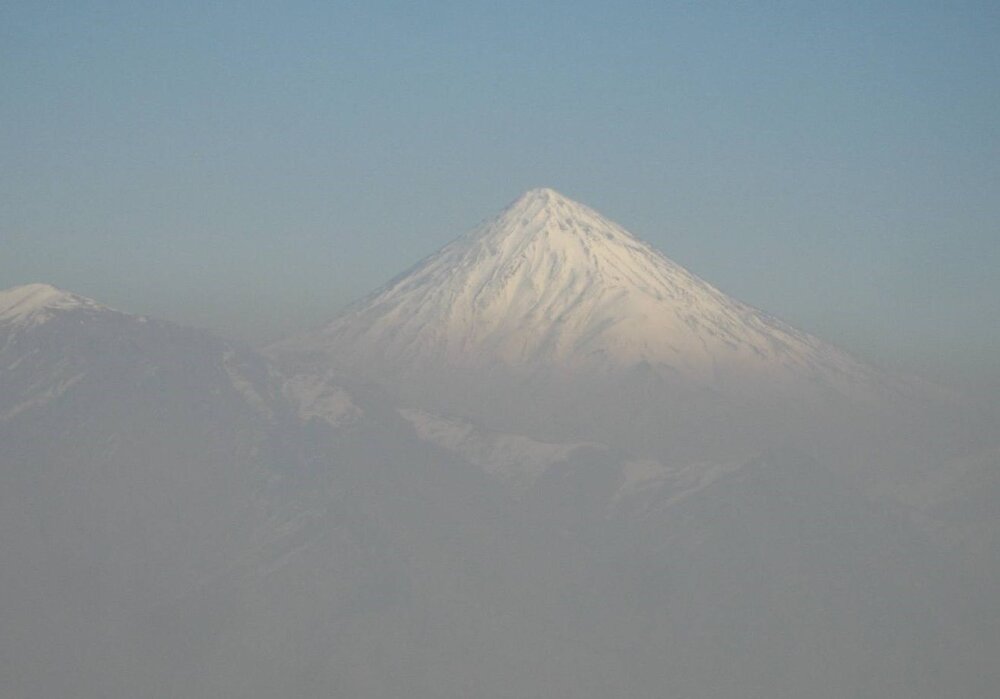What air pollution brings to mountains?

TEHRAN – Unbelievably, remote mountains are no exception to air pollution exposure despite many being difficult to travel to, as roads are scarce and accessibility is limited.
Pollution is a global health problem. Some 4.5 billion people worldwide are exposed to concentrations of airborne particulate matter (PM), at twice the level the World Health Organization considers safe.
Although, it is imagined that the mountains are little impacted by pollution. Unfortunately, polluting human activities like mining, livestock, energy production and tourism are threatening them.
We are harming the mountain ecosystems under various pretexts such as mining, land use change, and creating residential or industrial areas.The exploitation of timber, mining, and pasturage resources have impacted even remote mountain areas at high altitudes to varying degrees.
Mohammad Darvish, an environmental expert, told ISNA that mountains do not allow the accumulation of pollutants and dust by creating wind flows.
“We are harming the mountain ecosystems under various pretexts such as mining, land use change, creating residential settlements or changing use to industrial settlements, road constructions, and pipelines without regulation.
All reduce the power of the mountains to moderate the climate and control the reduction of land efficiency,” he explained.
Due to the fact that Iran is located on an arid plateau, its average rainfall is one-third of the global average, but the rate of evaporation is at least twice the global average, he lamented, highlighting that mountains need rivers to provide their residents with fresh water.
The height of most of Iran's peaks, such as Alamkooh, Sablan, Zardkooh, Shahankooh, and Bafq mountains, is above 4000 meters. In other words, they are the gems of resilience. Therefore, World Mountain Day is very important in our country and we must try to preserve this unique ecosystem, he said.
The United Nations General Assembly designated December 11 as “International Mountain Day”. As of 2003, it has been observed every year to create awareness about the importance of mountains to life. This year it is celebrated under the theme of “Women move mountains.”
Air pollution impact on mountain ecosystem
Air pollution emitters, which are PM 2.5 and PM 10, cause the photosynthesis process to be disturbed in plant species - mainly shrubs and trees - that exist on the mountain slopes. In addition, their lifespan will also decrease and eventually lead to their drying. Their drying means the bareness of the land, and the bareness of the mountain slopes makes them more vulnerable to floods and heavy rains, Darvish explained.
Air pollution, excessive grazing, land use change, and extreme mining are the key threats to the mountains’ plant species, he further added.
He went on to note that for almost all ecosystems in the country, there is at least one Organization, such as the Office of Deserts, Wetlands Office, and Forestry Office, but there is no trustee for the mountains, while the value of the mountain ecosystem, if not more, is certainly not less than other ecosystems.
Many endemic species of Iran are living in these areas, he said, emphasizing the need for the establishment of an administrative organization to manage the fragile ecosystem of mountains.
How to protect the precious ecosystem?
The most important pollutant sources in urban settlements are mobile pollutant sources. Citizens in areas located near mountains should have the power to choose to use electric vehicles, rail transport, bicycles, or attractive sidewalks instead of using motor vehicles for transportation, he suggested.
The second action is that climbers leave nothing but footprints as much as possible. They should not choose a new path and should move along the same paths that do not destroy more plant species, he explained.
“We should ask the government to register the territory of the mountains above 3000 meters as a national natural monument and to protect them from any kind of encroachment and change of use,” he recommended.
Iranian mountains
Mountains are home to 15 percent of the world´s population and host about half of the world's biodiversity hotspots.
Mountains provide freshwater for everyday life to half of humanity. Their conservation is a key factor for sustainable development and is part of Goal 15 of the sustainable development goals (SDGs).
The ‘mountain biodiversity and global change’ report published by FAO in 2010, calls Iran a great place to see plants you have never seen before; according to which, more than 100 mountain peaks can be found in Iran, some in the Zagros and Alborz mountains which reach altitudes of more than 4000 m.
The upper limit of vascular plants is 4800 m, the highest point where a plant has been found in Iran. A first evaluation of the vascular flora shows that 682 species belonging to 193 genera and 39 families are known from the alpine zone. The mountain flora of Iran is exceptional.
The Iranian mountains are situated between Anatolia/Caucasus and the Hindu Kush; their flora contains elements from both regions. However, more than 50 percent of these species are endemic to Iran (they occur nowhere else), and some are remarkable relic species, primarily local endemics with a narrow ecological range.
Many of these plants are potentially endangered and vulnerable species, and their threatened status should be assessed according to the International Union for the Conservation of Nature (IUCN) criteria.
FB/MG
Leave a Comment